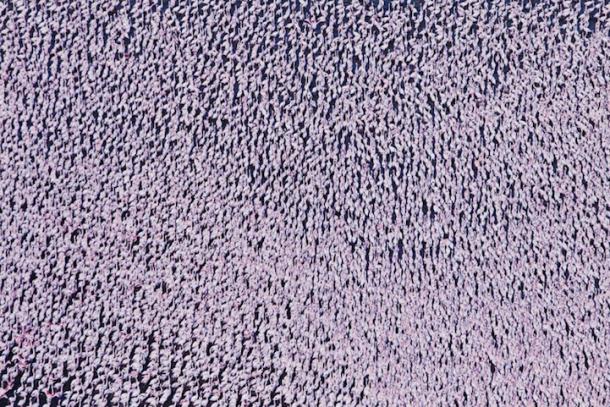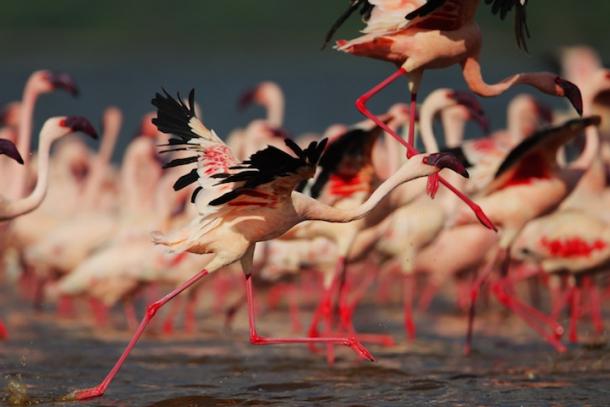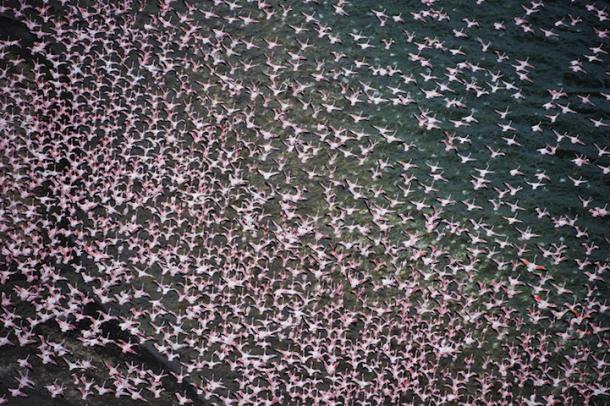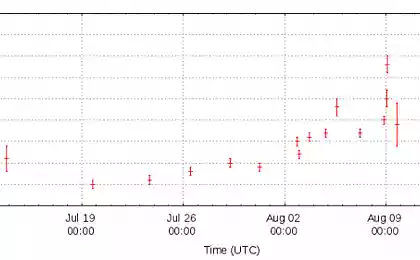1795
Bright photo
Large African Rift or the Great Rift Valley - a huge wildlife sanctuary and beautiful landscapes. He is a unique ecosystem. This area attracts pink flamingos because of marshy lakes and an abundance of food. At certain times of the year the shoreline of the Great Rift Valley is bright pink. The explanation for this - millions of flamingos fly here in search of food.

Extraordinary spectacle managed to capture professional wildlife photographer and expert on Africa, Martin Harvey. Once on the coast of the African Lakes Nakuru and Bokor, where the population of pink flamingos reaches 2 million individuals, he took the extraordinary footage nesting birds. Ornithologists recognize that this spectacle - one of the most picturesque in the world.




Flamingos have a curved beak with which get their food by filtering water from blue-green algae that thrive in warm alkaline water. Scientists estimate that the colony flamingos consume about 250 000 kilograms of algae per hectare per year. In search of food, they move randomly along the coast, but there is a threat the whole pack begins to move in unison.




Sam Martin Harvey says it's great luck to capture these pictures, because flamingos are constantly moving between more remote from each other lakes, depending on the availability of food. It also underlines the fact that, despite the apparent large number of flamingos are endangered. His work makes you think people on the protection of the environment and protect the truly incredible species of birds.





Extraordinary spectacle managed to capture professional wildlife photographer and expert on Africa, Martin Harvey. Once on the coast of the African Lakes Nakuru and Bokor, where the population of pink flamingos reaches 2 million individuals, he took the extraordinary footage nesting birds. Ornithologists recognize that this spectacle - one of the most picturesque in the world.




Flamingos have a curved beak with which get their food by filtering water from blue-green algae that thrive in warm alkaline water. Scientists estimate that the colony flamingos consume about 250 000 kilograms of algae per hectare per year. In search of food, they move randomly along the coast, but there is a threat the whole pack begins to move in unison.




Sam Martin Harvey says it's great luck to capture these pictures, because flamingos are constantly moving between more remote from each other lakes, depending on the availability of food. It also underlines the fact that, despite the apparent large number of flamingos are endangered. His work makes you think people on the protection of the environment and protect the truly incredible species of birds.




























